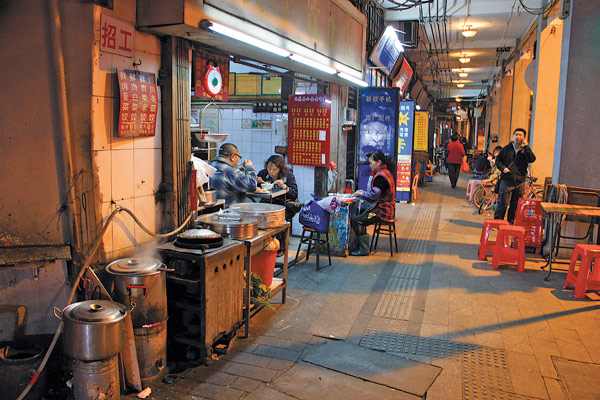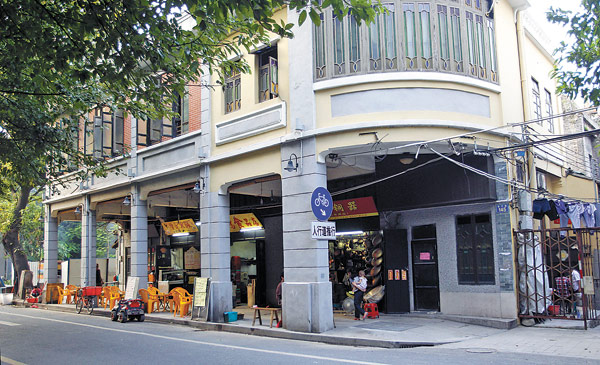
 |
|
Qilou is a straddling building with its ground floor opening for public access and upper floors reserved for residence (top). Walking along stores and restaurants inside a qilou offers a unique experience (above). Photos Provided to China Daily |
 |
|
Qilou on the commercial Shangxiajiu Street is a must-go when sightseeing in Guangzhou. Zou Zhongpin / China Daily |
When Guangzhou removed its city walls in 1918 and built its first modern streets, it introduced qilou buildings along them. Its popularity after first appearing on Yide Road led to it being replicated throughout the city.
Despite its relatively short history, there are many theories about the origin of qilou. The most convenient cites the inflow of overseas Chinese who returned from Southeast Asia, and qilou was one of the exotic styles they brought back.
Others point to Mediterranean architecture, with its verandah, as the ultimate origin of qilou.
Many architectural styles feature a roofed deck that surrounds the main building, but the Mediterranean one is used for functions similar to those in Guangzhou, which has hot and humid weather.
However, it is in Guangzhou that it turned into a customer-friendly attraction that characterizes its retail businesses. Not only do three or four-story structures have built-in qilou, but also high-rises like the 64-meter Aiqun Mansion - a hotel that opened in 1937 - incorporate the open walkway on the ground floor.
If you've visited the hinterlands of Southeast China, you know that people who live in similar weather often come up with similar designs for their living quarters.
In some ethnic villages, the first floor is often left vacant. Some use it for storage or to shelter animals, but always remove much of the wall for better ventilation.
Like these ancient village huts, qilou's upper floors are reserved for residence.
No matter how noisy or grubby below, those living above seem to be detached from the din of the world.
Actually, in the old days, the stores usually had workshops right at the back, so a whole family could live on the second floor, produce merchandise at the back of the ground floor and sell them at the qilou-front shop.
For similar reasons, qilou can be found in Hong Kong, and Hainan and Fujian provinces.
But many of the buildings have given way to relentless waves of modernization.
Even in Guangzhou, residents were shocked that qilou were disappearing at an alarming rate that the call rose to preserve it as an architectural heritage.
Nowadays, you can spend a whole day in a shopping mall, unaware of the vicissitudes of Mother Nature and shrouded by amenities like air-conditioning.
That makes qilou seem like the tentative first step toward modernization - somewhat like the architectural equivalent of the bicycle.
Sure, we have buildings that allow us to control every minutia. But, strangely, we long for the days when we found an ad-hoc sanctuary from nature's wrath.
In a qilou passageway, you won't get drenched, but you can still feel the wind, and even droplets of the torrents outside would waft in.
You get an impression you're taunting nature as nature taunts you.
In other words, you feel you're still in Guangzhou instead of some nondescript bomb shelter-like venue totally out of touch with the environment.
Contact the writer at raymondzhou@chinadaily.com.cn.